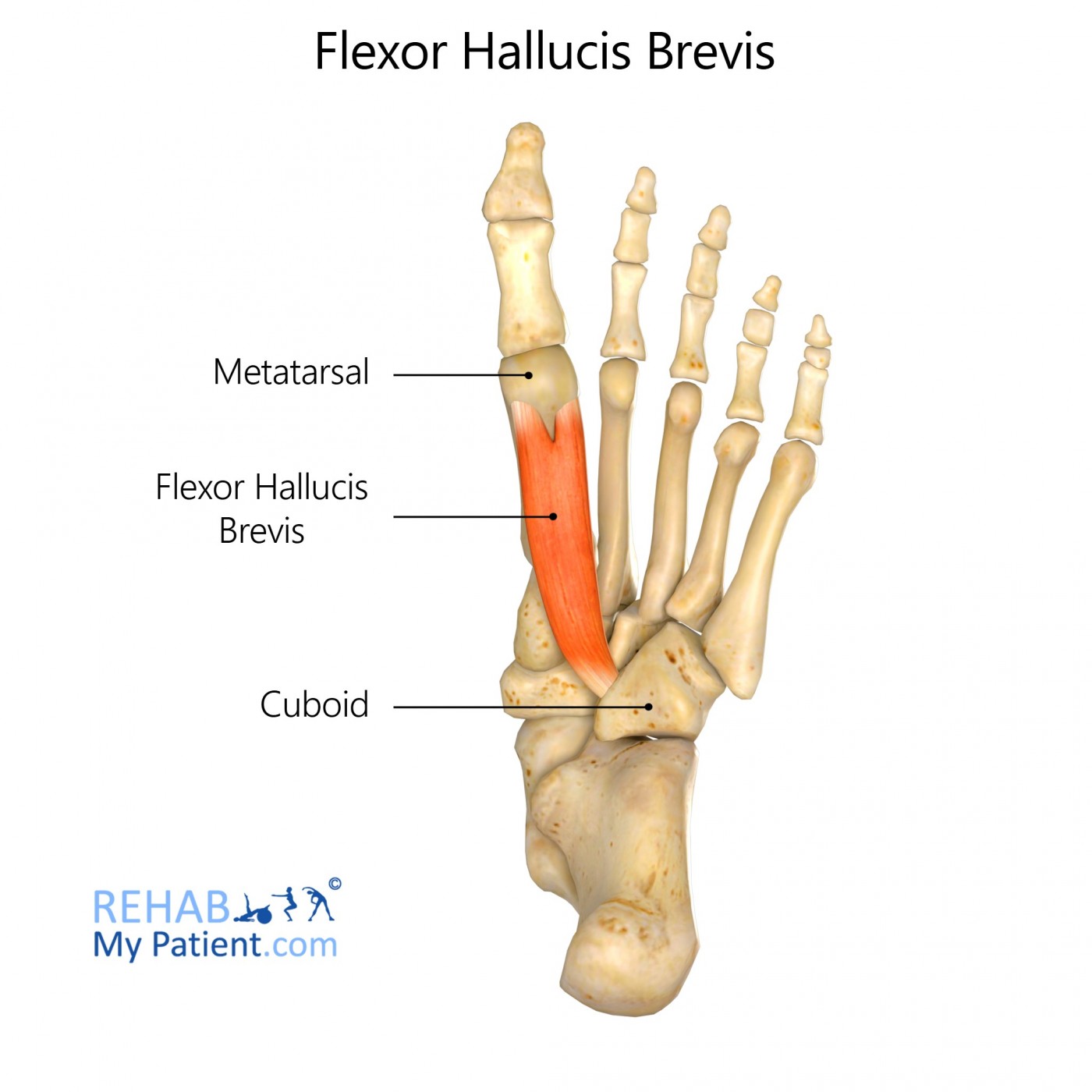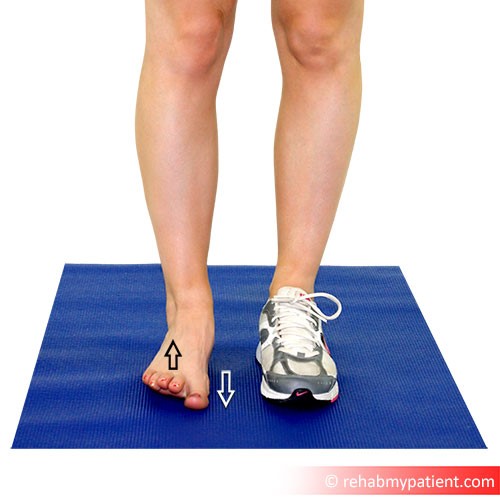
General information
Flexor hallucis brevis is one of the muscles in the plantar surface of the foot.
Literal meaning
A short muscle that flexes (bends) the big toe
Interesting information
Flexor hallucis brevis is subject to considerable anatomical variation, particularly at the muscle’s origin. Occasionally, there are slips of connective tissues extending from the calcaneus or from the long plantar ligament. Connective slips have also been clinically observed extending from the second toe.
Injury to flexor hallucis brevis will result in pain in the big toe that potentially radiates up the foot. Pain that originates in the ball of the foot and big toe can be an indicator of damage to flexor hallucis brevis and the muscle function should be examined. People with injuries to this muscle will often exhibit difficulty walking and may favor the un-injured foot.
Flexor hallucis brevis can be injured in a number of ways including walking, running, or even standing on uneven or rough surfaces. Poorly fitting shoes, particularly shoes that are too small, can cause injury as well. Women commonly injure this muscle by wearing high heeled shoes for extended periods of time.
Origin
Cuneiform bones (plantar surface).
Insertion
The base of the proximal phalanx and sesamoid bones of the first metatarsal (lateral and medial).
Function
Flexes the hallux (big toe).
Nerve supply
Medial plantar nerve (S1, S2).
Blood supply
Medial plantar artery.

Relevant research
Accurately measuring the relative strength of foot muscles presents a unique challenge to medical professionals. However, the strength of a muscle can be directly correlated with the morphology of that muscle. This study showed that using ultrasound to observe flexor muscle morphology (including flexor hallucis brevis) was an effective and convenient method for measuring muscle strength.
Karen J Mickle, Christopher J Nester, Gillian Crofts, and Julie R Steele (2013). “Reliability of ultrasound to measure morphology of the toe flexor muscle”. Journal of Foot and Ankle Research; 6:12.
It was shown that the medial insertion site of flexor hallucis brevis is longer than the lateral side. This has important implications for surgical procedures where preserving flexor hallucis brevis function is a concern.
V Barták, R Hromádka, P Fulín, D Jahoda, A Sosna, S Popelka (2011). “Anatomical study of flexor hallucis brevis insertion: Implications for clinical practice”. Acta chirurgiae orthopaedicae et traumatologiae Cechoslovaca. 78(2):145-8.
Flexor hallucis brevis exercises
To isolate and strengthen flexor hallucis brevis, stand on a flat surface with your feet slightly apart. Press the big toe of one of your feet into the ground while raising your other toes towards the ceiling. Hold this position for 30 seconds then switch to your other foot. Repetition of this exercise will increase flexor hallucis brevis strength and function.

Alternatively, simply taking a walk along the beach can strengthen the muscle since sand gives slightly, providing an excellent strengthening exercise.
Sign Up
Sign up for your free trial now!
Get started with Rehab My Patient today and revolutionize your exercise prescription process for effective rehabilitation.
Start Your 14-Day Free Trial